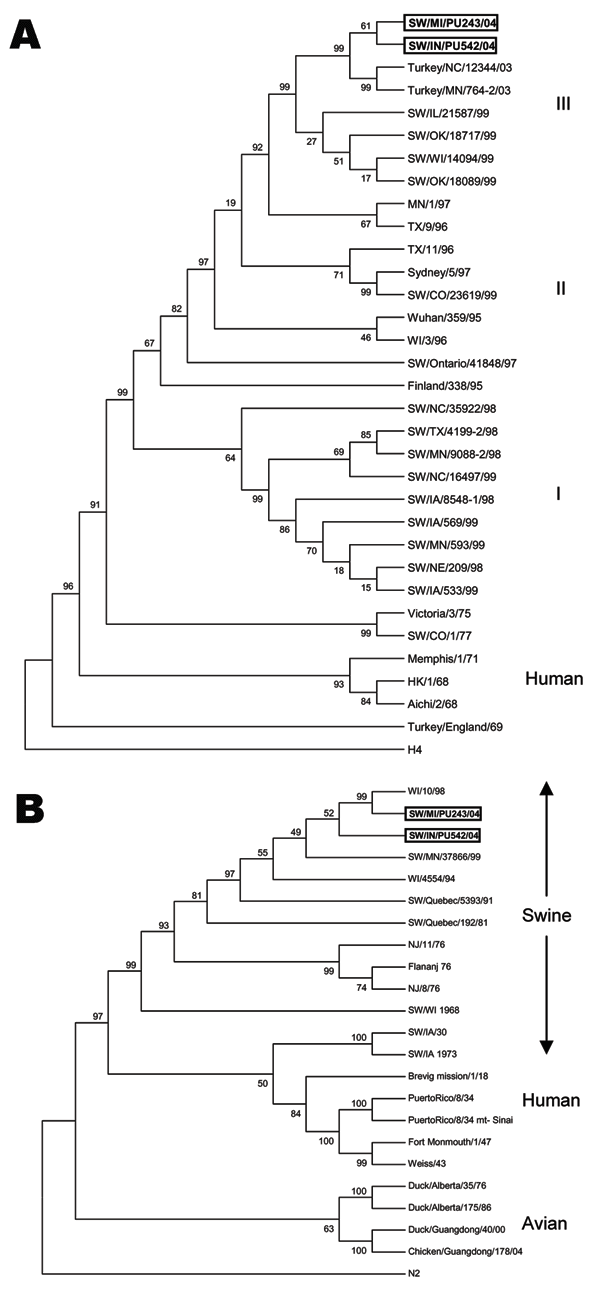Volume 12, Number 5—May 2006
Research
Novel Swine Influenza Virus Subtype H3N1, United States
Figure 1

Figure 1. Genetic relationships of the hemagglutinin (HA) 1 region of HA gene and neuraminidase (NA) gene of the H3N1 swine influenza viruses (SIVs) with other influenza viruses. The tree was created by maximum parsimony method and bootstrapped with 1,000 replicates. The bootstrap numbers are given for each node. A) Phylogenetic trees demonstrating genetic relationship of the closely related H3N2 turkey isolates, recent H3N2 SIVs, and human H3N2s. The tree was created from the HA1 region of HA and rooted to an unrelated sequence, the H4 HA of A/duck/Alberta/28/76. B) Phylogenetic analysis of the N1 subtype of NA genes of human, swine, and avian influenza viruses. N2 of A/Chicken/CA/6643/01 was used as an outgroup sequence.
1Current affiliation: Kasetsart University, Bangkok, Thailand